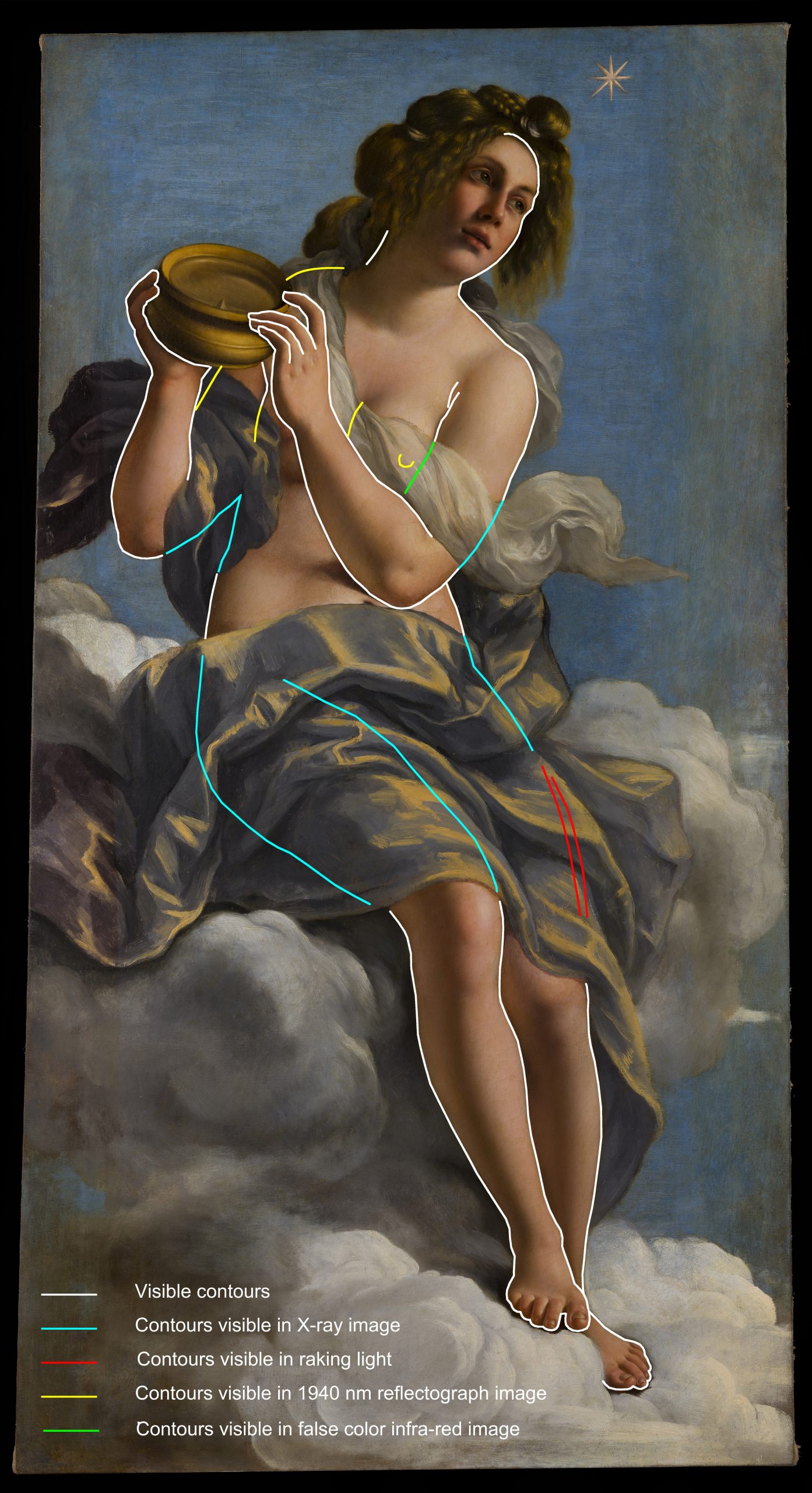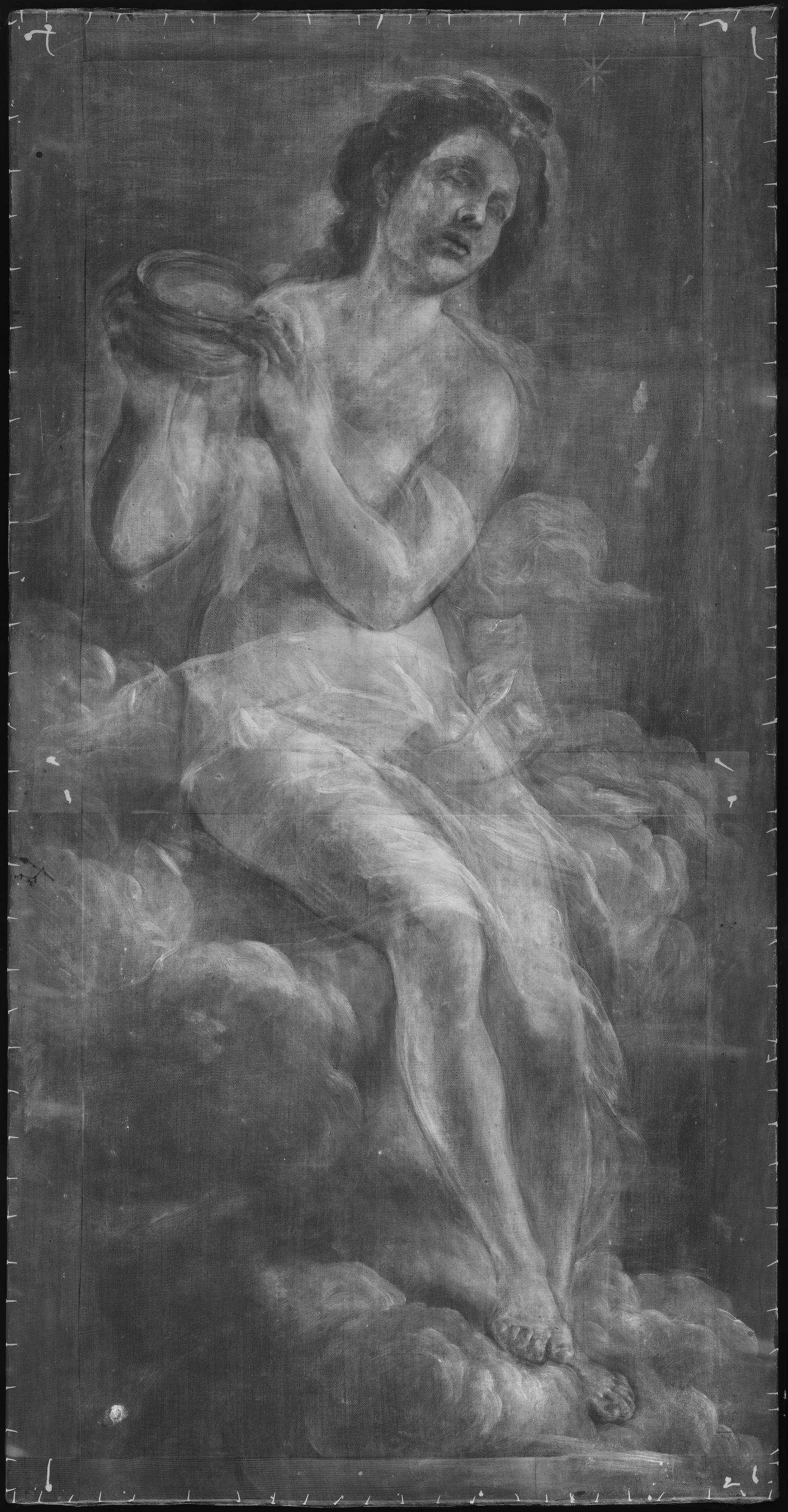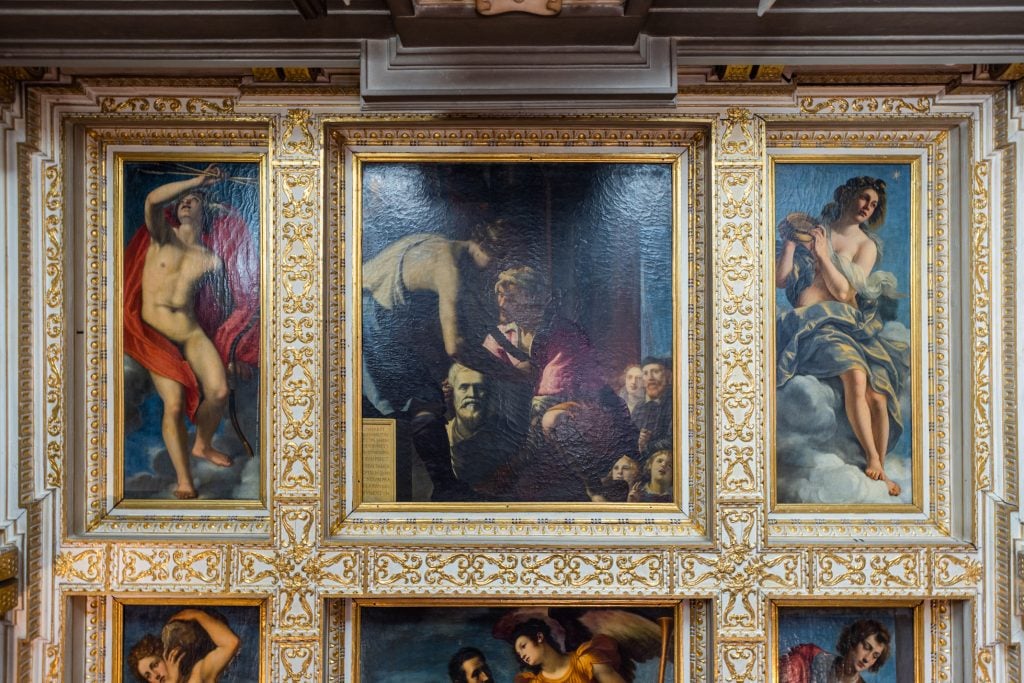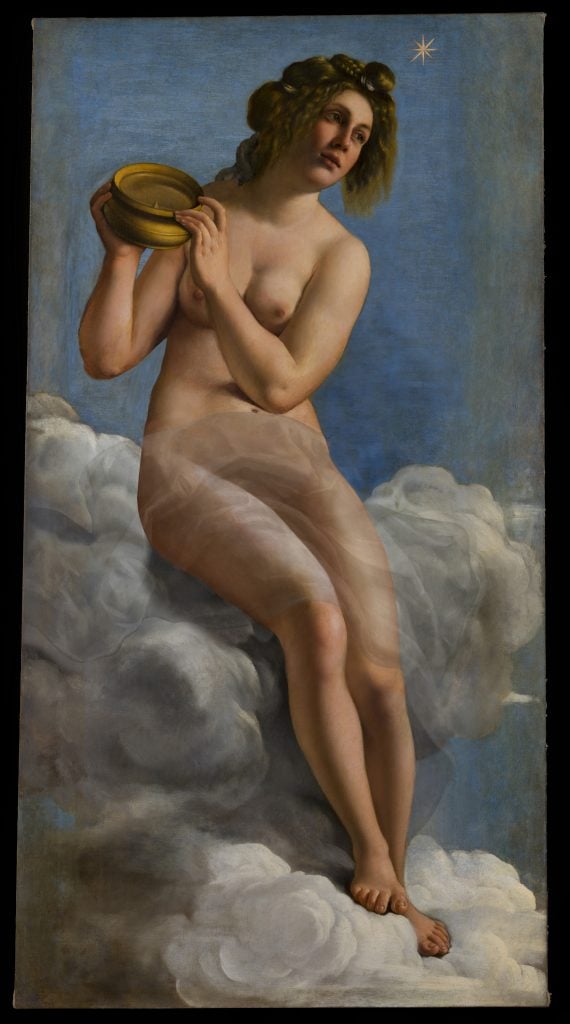More than 400 years ago, Italian Baroque artist Artemisia Gentileschi painted her first commission in Florence, adorning the ceiling of Casa Buonarroti—once home to the Renaissance master Michelangelo—with a female nude titled Allegory of Inclination. Less than half a century later, the figure was prudishly censored by heavy drapes of blue obscuring her original vision from view.
Now, thanks to the powers of digital imaging technology and other diagnostic tools, curators have revealed Gentileschi’s original composition in all her naked glory. The recreated figure is the star of “Artemisia in the Museum of Michelangelo,” an exhibition at Casa Buonarroti. The show is the result of the Artemisia UpClose project, a year-long effort to study the painting, as well as to restore it—work conducted inside the museum galleries, in full view of visitors.
It was Michelangelo Buonarroti the Younger, the famous artist’s nephew, who originally hired Gentileschi in 1618. But in 1684, his great-nephew, Leonardo da Buonarroto, was uncomfortable exposing his wife and children to the naked female form, and hired Baldassarre “Il Volterrano” Franceschini to add some modest, swirling drapery to obscure the figure’s private parts.
“The possibility of ‘unveiling’ this figure virtually, revealing the image originally painted by Artemisia, turned an ‘ordinary’ restoration into a quest to discover the woman behind the veils,” Wayne McArdle, co-founder of Calliope Arts, a British nonprofit dedicated to women’s historical contributions to culture that co-sponsored the project, said in a statement.
Additional funding came from British collector Christian Levett, founder of the Musée d’Art Classique de Mougins, near Cannes, which will reopen next year as the Femmes Artistes du Musée de Mougins.

Artemisia Gentileschi, Allegory of Inclination (1816), with contours traced in visible light and using diagnostic ph. Photo: Courtesy of the Casa Buonarroti, Florence.
“The censoring cover-up would not be removed for two reasons,” according to head conservator Elizabeth Wicks. “First, the removal of the thick layers of oil paint applied by Il Volterrano less than five decades after the original could put Artemisia’s delicate glazes just underneath the over-paint at risk,” she said. “Second, the veils were applied by an important late Baroque artist and are now part of the painting’s history.”
Instead, restoration scientists went over the painting—which curators removed from the ceiling for the first time in its history—with a fine toothed comb, examining every nanometer and every thin layer of paint. A reflectograph was able to peer beneath the drapery, and chemical analysis was able to identify each pigment used by the artist.
They discovered pentimenti, the obscured marks of changes to the composition made by the artist during the painting process, as well as Il Volterrano’s later additions.

Artemisia Gentileschi, Allegory of Inclination (1816), in x-ray imaging. Photo: Courtesy of the Casa Buonarroti, Florence.
“It took an x-ray to see through the white lead pigment covering the figure’s thighs. But, in the end, we got it: a science-based image of Artemisia’s original,” Wicks said.
After a careful cleaning to remove centuries of dirt and grime, you could also see the figure’s bellybutton and, on her calf, a fingerprint frozen in time from the work’s creation.
“The fingerprint was made when the original paint was wet, and it is highly likely that of Artemisia herself,” Wicks added.
To stabilize the historic work for the future, conservators applied two sets of canvas strips to the original canvas’s perimeter, and worked to consolidate the paint layers and correct any distortions to the surface after its hanging unconventionally from the ceiling for four centuries. They also transferred the painting to an expandable stretcher to better control the canvas’s tension.

The ceiling of the Casa Buonarroti, Florence, including Artemisia Gentileschi, Allegory of Inclination (1816). Photo: Olga Makarova, courtesy of the Casa Buonarroti, Florence.
During the current exhibition, however, viewers can actually see the painting at eye level, staring face-to-face with the allegorical figure in both her original and censored forms.
The show also examines Gentileschi’s work in the context of the other works Buonarroti the Younger commissioned for the ceiling as a celebration of Michelangelo’s virtues.
But its main goal is to celebrate Gentileschi, for whom appreciation has grown in recent years, not only for her professional success and artistic skill but also as a woman who had to overcome personal tragedy. (She survived torture at the hands of the Italian courts while bringing her rapist and her teacher, artist Agostino Tassi, to justice.)
The exhibition is accompanied by a new book, Artemisia UpClose, from the Florentine Press, and an upcoming lecture series.
“We want to make Artemisia Gentileschi a household name and to generate interest in her groundbreaking artworks. Artemisia is the ‘gateway drug’ for early women artists,” Margie MacKinnon, co-founder of Calliope Arts, said in a statement.
“Her backstory is so dramatic, her paintings so powerful, and her accomplishments so impressive,” added MacKinnon. “People wonder, ‘Why haven’t I heard of her before, and who are the other women artists I need to learn about?’”
“Artemisia in the Museum of Michelangelo” is on view at the Casa Buonarroti, Via Ghibellina 70 50122, Florence, Italy, September 26, 2023–January 8, 2024.
More Trending Stories:
The World’s Most Popular Painter Sent His Followers After Me Because He Didn’t Like a Review of His Work. Here’s What I Learned
Archaeologists Excavating the Tomb of Egypt’s First Female Pharaoh Found Hundreds of Jars Still Holding Remnants of Wine
The Second Paris+ Started With a Bang. Could Art Basel’s New Venture Unseat Its Flagship Fair One Day?
Is There a UFO in That Renaissance Painting? See 7 Historical Artworks That (Possibly) Depict Close Encounters With the Third Kind
A Glasgow Museum Reveals a $3.7 Million Rodin Sculpture Has Been Missing From Its Collection for Nearly 75 Years
What I Buy and Why: Art Entrepreneur Hélène Nguyen-Ban on Her Original ‘Art Crush’ and Owning a Half-Ton Book by Anselm Kiefer
Christie’s 20th/21st Century Evening Sale Notches Steady Results, a Feat in the Current Tepid Art Market
Four ‘Excellently Preserved’ Ancient Roman Swords Have Been Found in the Judean Desert
An Early Edition of an ‘Unhinged’ Christopher Columbus Letter Outlining What He Discovered in America Could Fetch $1.5 Million at Auction










